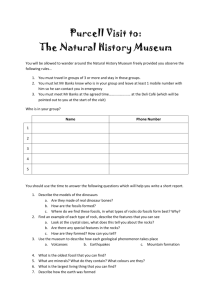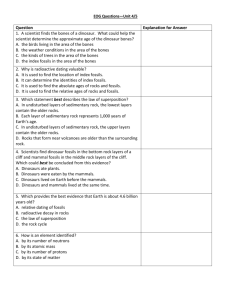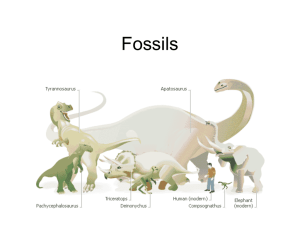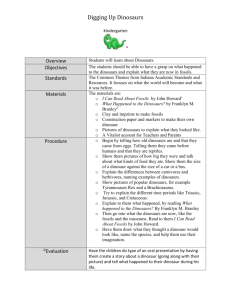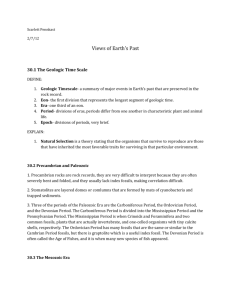mold fossils
advertisement
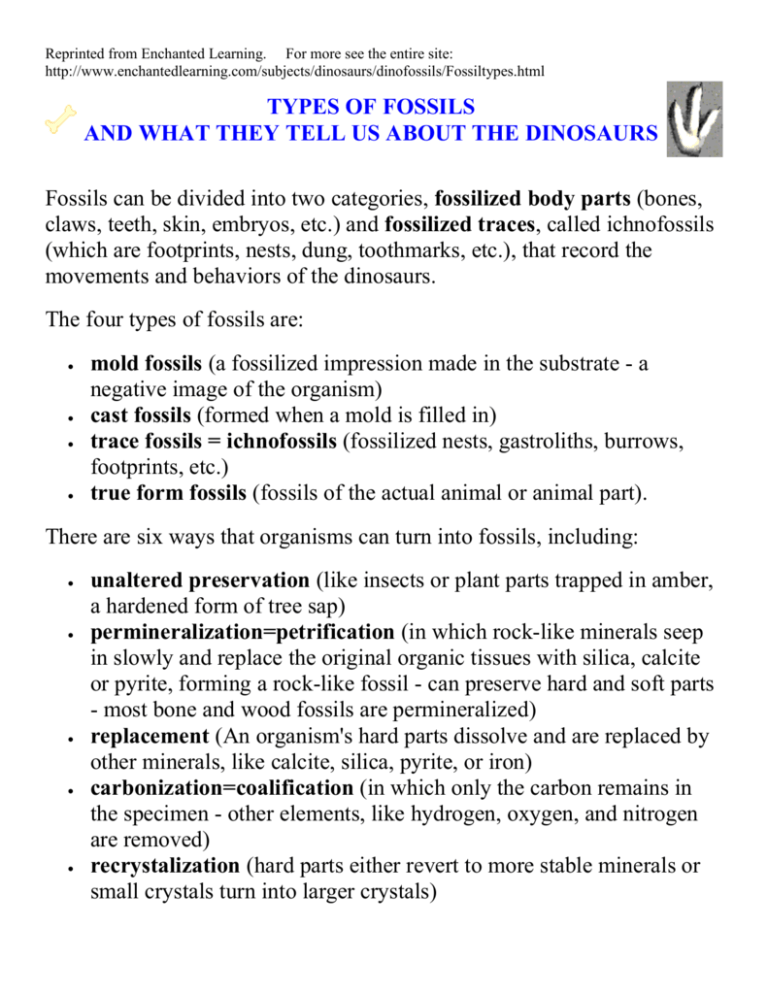
Reprinted from Enchanted Learning. For more see the entire site: http://www.enchantedlearning.com/subjects/dinosaurs/dinofossils/Fossiltypes.html TYPES OF FOSSILS AND WHAT THEY TELL US ABOUT THE DINOSAURS Fossils can be divided into two categories, fossilized body parts (bones, claws, teeth, skin, embryos, etc.) and fossilized traces, called ichnofossils (which are footprints, nests, dung, toothmarks, etc.), that record the movements and behaviors of the dinosaurs. The four types of fossils are: mold fossils (a fossilized impression made in the substrate - a negative image of the organism) cast fossils (formed when a mold is filled in) trace fossils = ichnofossils (fossilized nests, gastroliths, burrows, footprints, etc.) true form fossils (fossils of the actual animal or animal part). There are six ways that organisms can turn into fossils, including: unaltered preservation (like insects or plant parts trapped in amber, a hardened form of tree sap) permineralization=petrification (in which rock-like minerals seep in slowly and replace the original organic tissues with silica, calcite or pyrite, forming a rock-like fossil - can preserve hard and soft parts - most bone and wood fossils are permineralized) replacement (An organism's hard parts dissolve and are replaced by other minerals, like calcite, silica, pyrite, or iron) carbonization=coalification (in which only the carbon remains in the specimen - other elements, like hydrogen, oxygen, and nitrogen are removed) recrystalization (hard parts either revert to more stable minerals or small crystals turn into larger crystals) authigenic preservation (molds and casts of organisms that have been destroyed or dissolved). BODY FOSSILS The most common body fossils found are from the hard parts of the body, including bones, claws and teeth. More rarely, fossils have been found of softer body tissues. Body fossils include: Bones - these fossils are the main means of learning about dinosaurs. The fossilized bones of a tremendous number of species of dinosaurs have been found since 1818, when the first dinosaur bone was discovered. The first nearly-complete skeleton (of Hadrosaurus foulkii) was found in 1858 in New Jersey, USA. Teeth and Claws - Sometimes a bit of a broken tooth of a carnivore is found with another dinosaur's bones, especially those of herbivores. Lots of fossilized teeth have been found, including those ofAlbertosaurus and Iguanodon . Eggs , Embryos , and Nests - Fossilized dinosaur eggs were first found in France in 1869. Many fossilized dinosaur eggs have been found, at over 200 sites. Sometimes they have preserved parts of embryos, which can help to match an egg with a species of dinosaur. The embryo also sheds light on dinosaur development. The nests and clutches of eggs tells much about dinosaurs' nurturing behavior. A dinosaur egg was found by a 3-year-old child. Skin - Some dinosaurs had thick, bumpy skin, like that of an alligator . A 12-year-old girl discovered a T. rex's bumpy skin imprint, confirming that it had a "lightly pebbled skin." Muscles, Tendons, Organs, and Blood Vessels - These are extremely rare because these soft tissues usually decay before fossilization takes place. Recently, a beautiful theropod fossil, Scipionyx, was found with many impressions of soft tissue preserved. Also rare are so-called dinosaur "mummies", fossilized imprints of dinosaur skin and other features. These are not real mummies in which actual animal tissue is preserved, but fossils that look a bit like mummies. TRACE FOSSILS Trace fossils (ichnofossils) record the movements and behaviors of the dinosaurs. There are many types of trace fossils. Even the lack of trace fossils can yield information; the lack of tail-furrow fossils indicates an erect tail stance for dinosaurs that were previously believed to have dragged their tails. Trackways (sets of footprints) - Dinosaur tracks, usually made in mud or fine sand, have been found at over 1500 sites, including quarries, coal mines, riverbeds, deserts, and A Hadrosaur footprint. mountains. There are so many of these fossils because each dinosaur made many tracks (but had only one skeleton) and because tracks fossilize well. Fossil footprints have yielded information about: o Speed and length of stride o whether they walked on two or four legs o the bone structure of the foot o stalking behavior (a carnivore hunting a herd of herbivores) o the existence of dinosaur herds and stampedes o how the tail is carried (few tail tracks have been found, so tails were probably held above the ground) Unfortunately, linking a set of tracks with a particular species is often virtually impossible. Although there were many more plant-eating dinosaurs (sauropods and ornithopods) than meat-eating dinosaurs (theropods), many more footprints of meat-eaters have been found. This may be because the meat-eaters walked in muddy areas (where footprints are more likely to leave a good impression and fossilize) more frequently than the plant-eaters). Toothmarks - Toothmarks generally appear in bones . Gizzard Rocks - Some dinosaurs swallowed stones to help grind their food (modern birds do this also). These stones, called gastroliths (literally meaning stomach-stones), have been found as fossils. They are usually smooth, polished, and rounded (and hard to distinguish from river rocks.) Coprolites (fossilized feces) - Coprolites yield information about the dinosaurs' diet and habitats. Coprolites up to 40 cm (16 inches) in diameter have been found, probably from a sauropod, considering its size. A huge theropod coprolite was recently found Sasketchewan, Canada. The only meat-eater large enough in that area at that time was Tyrannosaurus rex. Burrows and Nests - Fossils of dinosaurs' burrows and nests can reveal a lot about their behavior.



